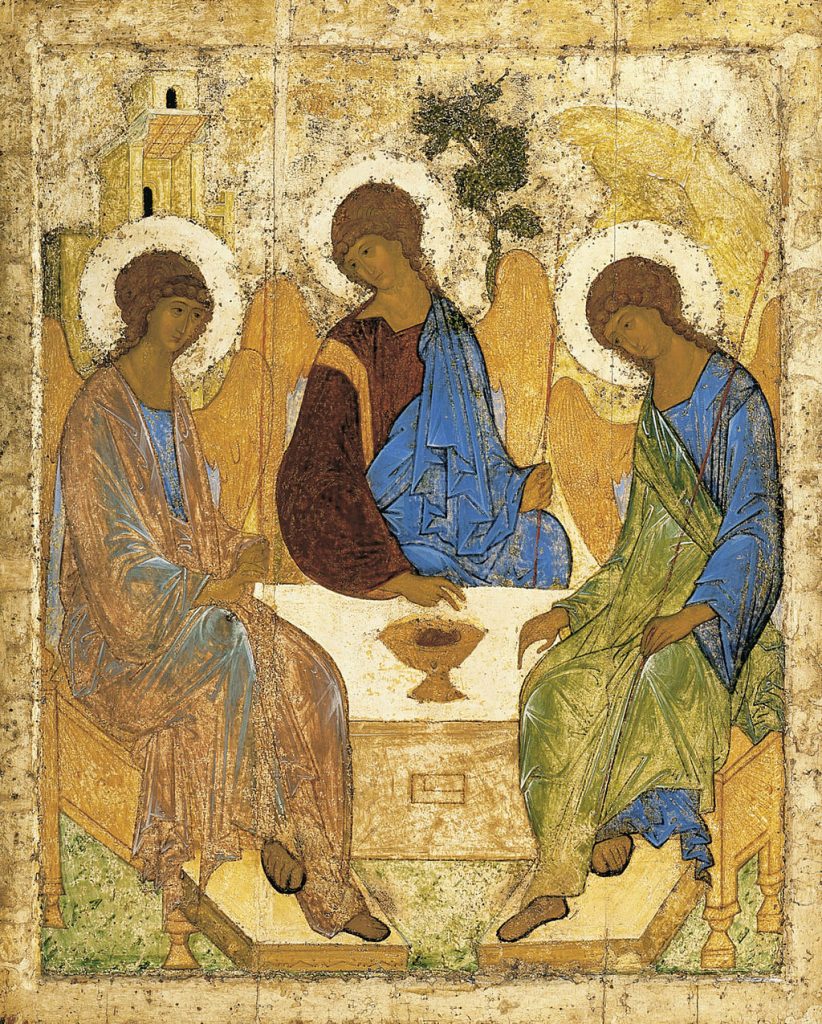
Attempts to explain the Trinity are multiple. St Patrick is said to have used a shamrock to illustrate that the Three are One. The Russian iconographer, Rublev, offered us a beautiful image where the three appear equal around a table and there is a space for the observer to join them. Hildergard of Bingen left us an image of the Christ figure surrounded by a golden circle representing the Spirit, enclosed in a larger circle representing the light of God, Father.
In another relational representation, the Cappadocian (Eastern Turkey) Fathers of the third and fourth centuries, offered us the image of God as a circular movement of total outpouring and perfect receiving among three intimate partners. The word used by these wise men was perichoresis which comes from the same root word as choreography, so the Trinity is relating in a dance of love, into which we are invited.
So, how might these representations influence the life of you and me?
Jan Richardson suggests that the Trinity continually lives in the tension between concealing and revealing and I would add of inviting us into their loving embrace. I believe that the most important thing about Trinity is their loving invitation to us to enter their life, their dance. They are a community of love, and any community of love is always outward looking.
John Denver had a song with the words “Just let me love you, let me give myself to you…” – that is Trinity’s ongoing song. This song is sung from within us, not from some outer planet beyond the sky.
Often it is difficult for us to believe that Trinity, this incomprehensible, holy Mystery, the transcendent God, dwells within. This closeness and intimacy can be too much sometimes, and we withdraw. Most of us spend our lives entering and withdrawing, but at least we enter again and again, allowing ourselves to be drawn closer over and over.
Many of you have probably contemplated Rublev’s icon where the three Persons are seated at a table. In the front of the table there was originally a mirror, in which the observer could see themself reflected as part of the group. This could be a good thing to do this Trinity Sunday, to allow oneself to be present, in imagination, at the table with Trinity, within Trinity, without expectation, just being with Father/Mother God, Jesus and Sofia/Spirit.
Catherine LaCugna (1952–1997) proposes that any notion of God as not giving, not outpouring, not self-surrendering, not totally loving is “a theological impossibility and absurdity. God only and always loves”.
Let us bask in that love.
Trinity
Incomprehensible, present
Loving, dancing, inviting,
Community of outpouring love,
God.
Frances Maguire rsj
CentreWest Region
